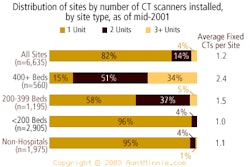| Wireless Networking Technologies |
||||
 |
||||
| Network Type | IEEE Standard | Standard Security | Characteristics | Security Risk |
 |
||||
| PAN [1] | 802.15 (Bluetooth) | Device level plus up to mandatory integrated encryption | 2.45GHz. 1 or 2 Mb/s transfer, up to 10 meters low power mode & 100 meters high power mode. | Minimal for eavesdropping, as usable range is very limited. Potentially high for device theft. |
 |
||||
| LAN [2] | 802.11b | WEP [3] | 2.4GHz. 11Mb/s maximum transfer rate, up to 400 meters [7]. | High if only WEP is implemented |
 |
||||
| 802.11a | WEP [3] | 5 GHz range. 54 Mb/s maximum transfer rate, up to 400 meters [7]. | High if only WEP is implemented | |
 |
||||
| 802.11g | WEP [3] | 2.4 GHz range. 54 Mb/s maximum transfer rate, up to 400 meters [7]. | High if only WEP is implemented | |
 |
||||
| 802.11i | WPA [4] 802.1x | Future security enhancements to existing 802.11 standards. Proposed firmware upgrade to current hardware. | Projected to be low if fully implemented. | |
 |
||||
| WAN [5] | WAP [6] | Utilized cellular technologies (CDMA, CDPD, GSM/GPRS, etc.) with global reach at relatively slow transfer rates (9.6K on CDPD to 144K and higher on 3G CDMA). | Low due to multiple strong encryption algorithms. | |
 |
||||
[1] PAN -- Personal Area Network
[2] LAN -- Local Area Network
[3] WEP -- Wired Equivalent Privacy
[4] WPA -- Wi-Fi Protected Access
[5] WAN -- Wide Area Network
[6] WAP -- Wireless Access Protocol
[7] Actual distances vary with vendor, terrain & construction.


















